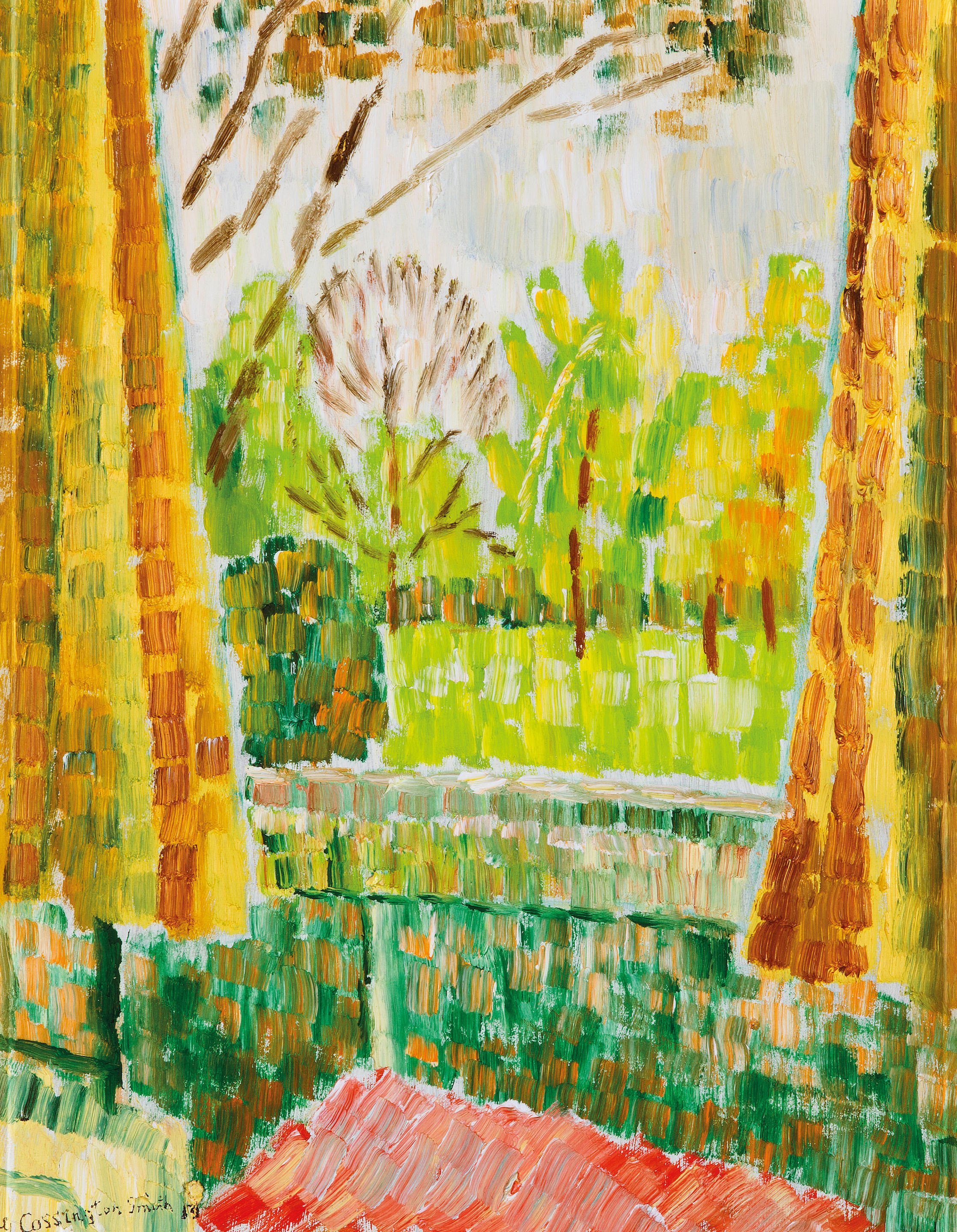








그레이스 코싱턴 스미스(Grace Cossington Smith), 오스트레일리아, 예술가, 1892-1984
후기 인상주의 화가 '그레이스 코싱턴 스미스'는, 호주에 처음으로 모더니즘 화풍을 소개한 여류 화가입니다. 영국과 독일에서 미술공부를 마치고 돌아온 그녀는, 당시 23살로 비록 젊은 나이였지만, "양말 짜는 여인" 작품으로 강한 개성을 보여주었습니다.
그녀는 화려한 색상의 붓질을 조심스럽게 배치하여 작은 사각형 패턴의 화풍을 구축했습니다. 그녀의 대표작은 "아치형 다리 The Bridge in Curve". 이 작품은 시드니의 하버 브리지가 건설 중인 모습을 담고 있습니다.
굽어졌다가 올라가는 다리의 커브 부분에 후광처럼 둘러쳐진 역광의 빛을 잘 표현한 작품입니다. 다리의 양쪽에서 점점 가까워지는 긴장감이 느껴집니다. 그녀는 건설 중인 하버 브리지를 여러 각도에서 역동적으로 그렸는데, 호주의 5달러짜리 기념주화에도 그녀 작품이 새겨져 있답니다.
About Her
One of Australia’s most celebrated 20th-century painters, Grace Cossington Smith was an important early exponent of modernism in Australia. Her work formed part of the first significant wave of Australian responses to European post-impressionism. A brilliant colourist, she drew her subject matter from the familiar surroundings of her home and her experience of Sydney city life, which she transformed into vibrant images of light-infused colour.
Cossington Smith was born in Sydney in 1892, although some confusion surrounds her actual birthdate: her birth certificate, which states 20 April, is thought to be incorrect as the artist and her family always gave her birthday as 22 April.
Cossington Smith began studies with painter Antonio Dattilo Rubbo in Sydney in 1910. In 1912 she travelled to Europe and attended classes at Winchester School of Art in England and at Stettin in Germany. She claimed not to have studied modern art during her trip. It was after returning to Dattilo Rubbo’s classes in Sydney that she studied European modern art alongside Roland Wakelin and Roy de Maistre, through colour reproductions brought back from Europe by Dattilo Rubbo and fellow student Norah Simpson.
Soon after, Cossington Smith painted The sock knitter 1915, a remarkable student work that reveals the influence of post-impressionist European painters Paul Gauguin, Paul Cézanne and Vincent van Gogh. Depicting Madge, the artist’s sister, knitting socks for soldiers serving on the frontline in the First World War, the painting is not only distinctly modern in its outlook, but also counterpoints the more common narratives of masculine heroism in wartime by focusing instead on the quiet steady efforts of the woman at home.
In the 1920s Cossington Smith painted a dynamic series of the Sydney Harbour Bridge in construction, including the masterpiece The curve of the bridge, 1928-29. She developed a highly individual technique, utilising rhythmic broken brushwork in unmixed, high-keyed colour. Her aim, she said, was ‘to express form in colour – colour within colour, vibrant with light’ and colour became the key mode through which she represented structure, depth and solidity, in works such as the Gallery’s Things on an iron tray on the floor, c1928.
Sydney between the World Wars grew ever-more urban and cosmopolitan, and Cossington Smith celebrated modern city life in paintings such as The Lacquer Room, 1936. In the 1940s she worked increasingly in landscape. She also travelled to Europe, from 1948 to 1951, absorbing the works of Renaissance masters Masaccio and Fra Angelico. By the mid 1950s she was concentrating primarily on domestic interiors, partly due to the long illness of her much-loved sister at home, producing paintings such as Interior with wardrobe mirror, 1955 and her late masterpiece The window, 1956. Such works are dazzling and climactic pictures of her powers as a mature painter and shimmering statements of her astonishing powers as a colourist.
In 1926 Cossington Smith had joined Thea Proctor, Ralph Balson, Grace Crowley, Roland Wakelin and other modernist artists in the Contemporary Group, with whom she exhibited for many years. A first solo exhibition at Grosvenor Galleries in Sydney in 1928 confirmed her reputation as a skilful and poetic colourist, and she continued to exhibit at the Macquarie Galleries from 1932 until 1971. In 1973 she was awarded an Order of the British Empire and had a major retrospective exhibition at the Art Gallery of NSW, after which she gave up painting.
판위량(Pan Yuliang), 중국, 서양화가, 1895-1977
판위량(Pan Yuliang), 중국, 서양화가, 1895-1977중국의 '판위량 潘玉良'은 비천한 창기에서 세계적 화가로 탈바꿈해 불꽃처럼 살았던 여류 화가입니다. 어려서 부모를 잃고 외삼촌 손에서 자라다가
mkpark03.tistory.com
이르마 스턴(Irma Stern), 남아프리카 공화국, 예술가, 1894-1966
이르마 스턴(Irma Stern), 남아프리카 공화국, 예술가, 1894-1966남아프리카의 작은 마을에서 태어난 '이르마 스턴'은, 원시적 느낌이 담긴 아프리카의 인상을 현대적인 감각으로 완성한 작가입니다
mkpark03.tistory.com
제시 윌콕스 스미스(Jessie Willcox Smith), 미국, 삽화가, 1863-1935
제시 윌콕스 스미스(Jessie Willcox Smith), 미국, 삽화가, 1863-1935제시 윌콕스 스미스(Jessie Wilcox Smith)는 결혼한 적이 없지만 오랜 경력 동안 어머니, 아기, 아이들을 그리는 일을 전문으로 했습니다. 그
mkpark03.tistory.com
'생활 > 예술' 카테고리의 다른 글
| 프랭크 브램리(Frank Bramley), 영국, 화가, 1857-1915 (2) | 2024.05.12 |
|---|---|
| 알베르트 앵커(Albrecht Anker), 스위스, 화가, 1831-1910 (1) | 2024.05.11 |
| 필립 자크 린더(Philippe Jacques Linder), 프랑스, 화가, 1835-1914 (0) | 2024.05.09 |
| 홍형표, 한국, 고봉밥과 호박을 그리는 작가, 1960-현재 (0) | 2024.05.09 |
| 엠마 하워스(Emma Haworth), 영국, 화가, 1975-현재 (0) | 2024.05.09 |




댓글